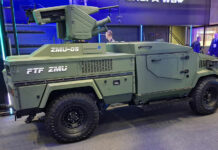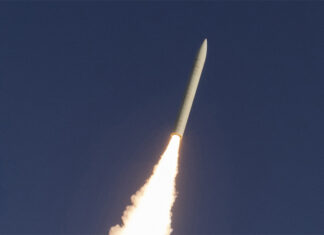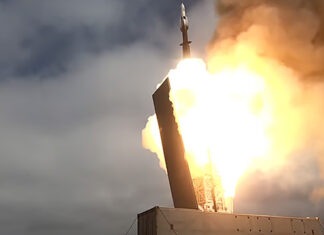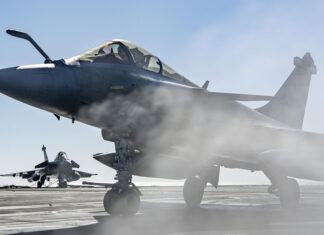A new US Navy / Marine Corps program drawing a growing attention among UAV manufacturers is the STUAS / Tier II UAV. Several companies have already lined up for the competition, including Raytheon, offering with the KillerBee 4 system, originally designed by Swift. After Northrop Grumman acquired Swift UAV business, Raytheon secured access to the system and bought the relevant segment from Northrop Grumman. Other companies competing for STUAS are Elbit Systems, teaming with General Dynamics, offering the new Hermes 90 platform. AAI has also announced it is offering the Aerosonde 4.7 system. Boeing is offering the Integrator, a beefed-up version of the Scan Eagle designed by its subsidiary company InSitu. The program, originally scheduled to launch in 2007 was delaid to 2009 after the Navy and Marines re-evaluated their requirements and plans. As an intermediate step, the corpsfielded severalUS Army/AAI RQ-7 Shadow systems. For the original program, the MArine Corps evaluated several systems, including the SpyHawk, by Arcturus, and BAE Systems’ Skylynx II, designed by the Israeli company Inocon, which has recently reappeared, redesigned and rebranded as the Hermes 90. According to Vic Sweberg, Director of the newly created Boeing Unmanned Systems Division, the Integrator is only the first step in a long way that will position Boeing at the forefront of the unmannes aerial systems market. Boeing is determined to become a major player in the unmanned systems market. “With Insitu we believe we can make the step forward and take that ground in about 3-5 years. He added that, at present, the market is already indicating a steep growth.
Raytheon also considers its contender for the program to play a central role in the company’s growth into the unmanned systems domain. Mark Bigham, director of business development for Raytheon’s Intelligence and Information Systems (IIS) is confident Raytheon will take a leading role in the UAS market by leveraging its legacy of sensors, weapons, C3I expertise and recent integration experience on KillerBee to provide a complete systems solution. He said Raytheon is investing in new technology to address emerging defense and civil requirements that will make Raytheon a significant player in the UAS market and a systems integrator for future UAS requirements.
Elbit Systems is positioning the newly introduced Hermes90 as its contender for the US program. To better position itself in the US market the company announced a teaming agreement with General Dynamics Armament and technical Products (GDATP) to promote its unmanned systems in the USA. The Hermes90 offers long endurance of up to 18 hours, mission range of up to 100 kilometers, and varied payloads integration capability. Equiped with wheels or sleds, the unmanned aircraft can be launched and recovered using different methods, including launching by an integral launcher for point launch and recovery on non-prepared surfaces without using any dedicated ground equipment. The compact and lightweight system can be carried onboard two tactical utility vehicles and is operated by a two or three-person crew. AAI is offering the Aerosonde 4.7 unmanned aircraft for Navy/Marines program. To support expeditionary deployment, the 4.7 uses an integrated launch and recovery system enabling fast, flexible ground and/or shipboard automated launch and recovery capability. The modular payload installation allows the rapid addition of new payloads and capabilities as they become available, enabling technology refresh with little to no aircraft or system modifications. For the ground control system the company is offering the Expeditionary Ground Control Station (EGCS), based on the 4586-compliant ‘One System’ design AAI developed for the U.S. Army. AAI comments that this architecture will support interoperability between the Aerosonde Mark 4.7 and other One System platforms, including the Shadow Tactical Unmanned Aircraft System (TUAS) already used by the Army and U.S. Marine Corps.



















